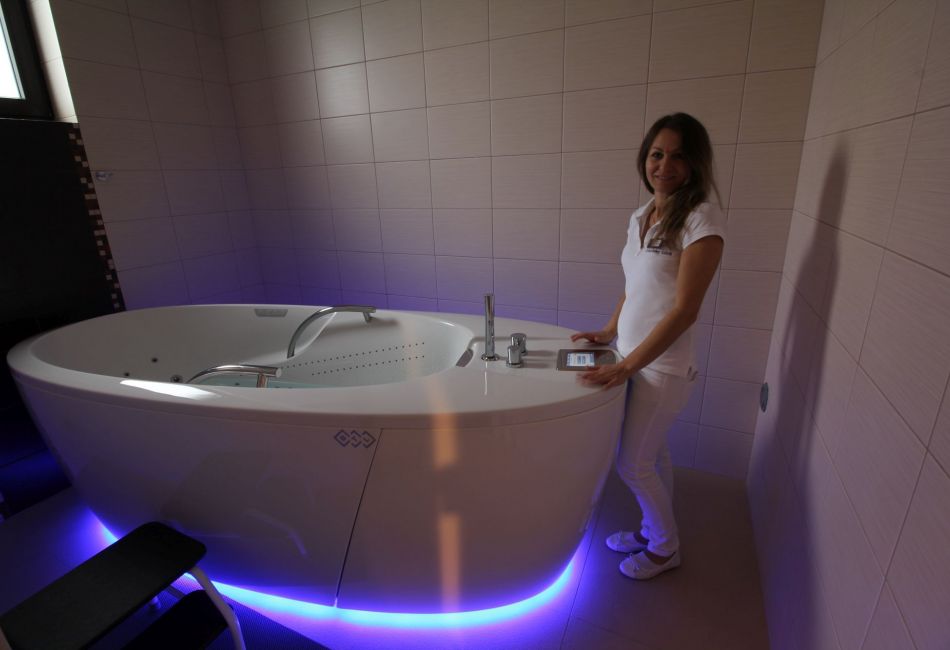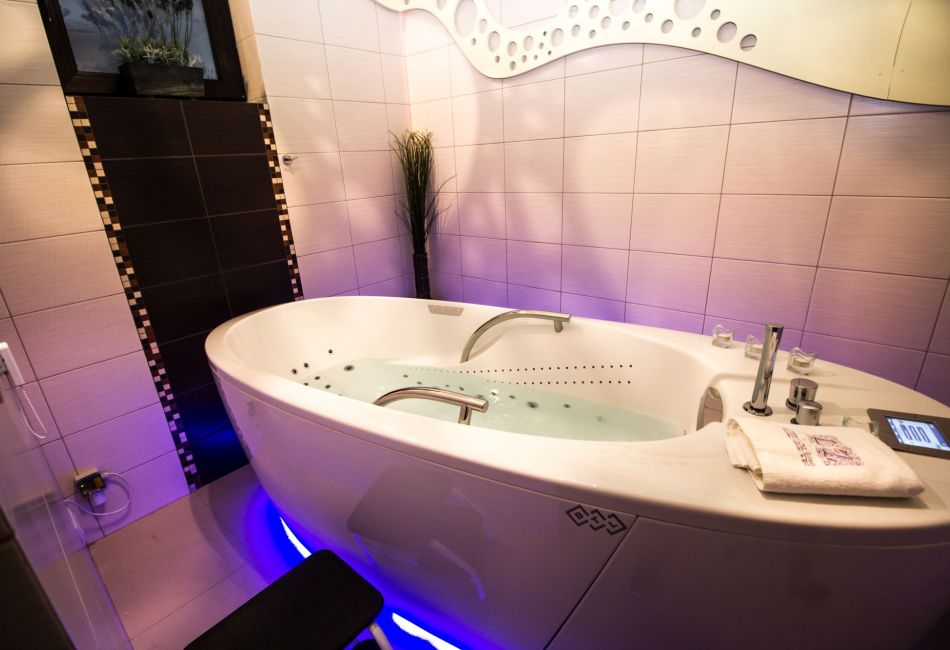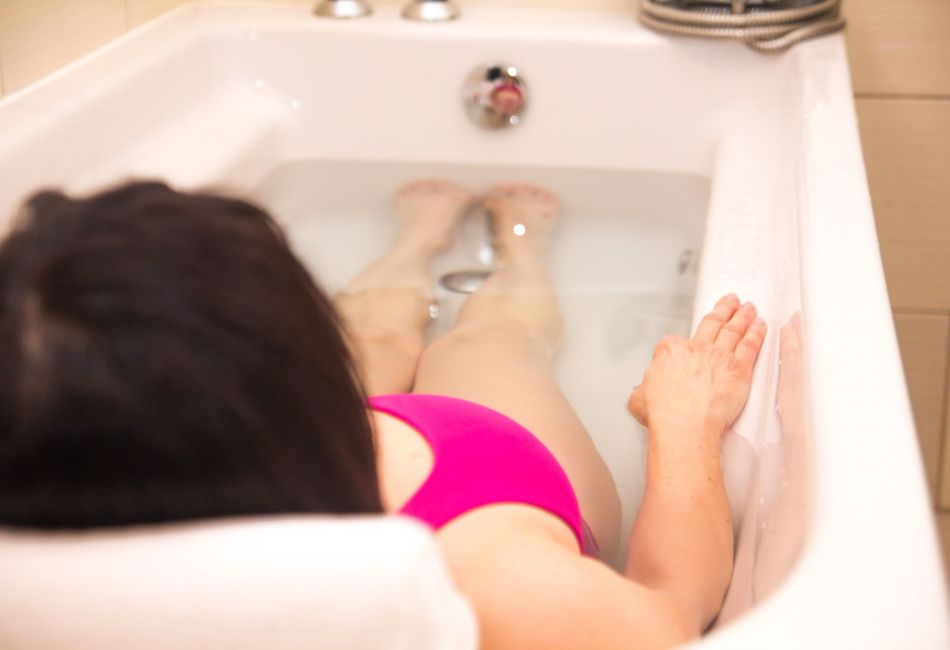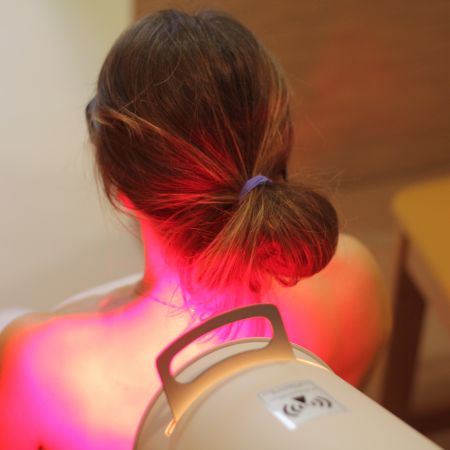Sulphur Water
Busko-Zdrój is one of the few places where so-called "sannum per aqua" therapeutic methods—treatment with water—are most developed and widespread. This is all thanks to the sulphur water that is unique to this region.
The crystal-clear, highly mineralized sulphur water is obtained through boreholes LW-1 and LW-2 in Las Winiarski (depth 165 m) and borehole Busko C-1 (depth 663 m) in Busko-Zdrój. The medicinal waters from the Las Winiarski Mine and Busko Północ have comparable compositions and properties. Traditionally, individual wells (sources) have been given names: LW-1 is called "Zuzanna," LW-2 "Filip," and Busko C-1 "Grzegorz."
Ingredients
The temperature of the water from the Las Winiarski deposit is about 13.5-13.8°C, while from the Busko C-1 well, it exceeds 25°C at the outflow, making it a thermal water. The pH of the water from all wells varies slightly, ranging from approximately 7.0 to 7.3. The main components are sodium, chloride, sulfate, magnesium, calcium, and bicarbonate ions. Additionally, the water contains trace elements such as bromine, iodine, fluoride, potassium, lithium, selenium, silicon, and boron. However, the primary element determining the water's therapeutic properties is hydrogen sulfide, with concentrations in the Las Winiarski water ranging from 42-54 mg/l. According to balneological criteria, the presence of this component, along with high mineralization, makes the water suitable for therapeutic baths.
Purity
The discovered medicinal water is chemically "clean"—it does not contain harmful substances such as phenols, petroleum derivatives, halogenated hydrocarbons, pesticides, or PAHs (polycyclic aromatic hydrocarbons). This is yet another fact that, in times when finding unpolluted, anthropogenically unaffected water is difficult, contributes to its unique and exceptional value.
How Does It Work?
Sulphur is an essential element for life. A significant deficiency can lead to the death of plants, diseases, and even death in animals, as well as various ailments in humans. The sulphur content in the human body is about 0.14% of the weight, or 100 grams. The daily metabolic turnover of sulphur in humans is 2000 mg. Research shows that after a one-hour bath, full sulphur absorption is around 1 mg. Hydrogen sulfide penetrates not only through the skin but also through the mucous membranes of the bronchi, gastrointestinal tract, and reproductive system, with total absorption reaching up to 58 mg. The sulphur absorbed during the bath quickly reaches the cells. After penetrating the skin, it forms polysulfides, which are a physiological component of connective tissue. As early as 20 minutes after the bath, sulphur has been found in joint cartilage, bone tissue, blood vessel walls, and the mucous membrane of the gastrointestinal tract. It accumulates in cartilage, synovial membranes, and bones, aiding in the regeneration and reconstruction of connective tissue. Sulphur is excreted in urine, with trace amounts detectable up to 7 days after the bath.
Studies have shown that patients with rheumatoid arthritis experienced reduced morning stiffness, joint pain, and improved mobility after undergoing sulphur baths. In patients with vascular atherosclerosis, significant reductions in cholesterol and fibrinogen levels were noted in blood serum after operations involving artery grafts.
Truth or Myth?

As with many important things, there are numerous opinions and legends surrounding sulphur water, with debates about its color, smell, or effectiveness. Many questions arise, and the true answers are often simple and surprising, quickly dispelling doubts.
"Man is a drop in the sea of life – and only differs from a drop of water in that he is aware of it." – Władysław Grzeszczyk

The most frequently asked question is: "What color should sulphur be?" or "Why isn't sulphur dark?" The color of the sulphur water in Las Winiarski has always been the same: crystal-clear water with a straw-greenish tint, and this is the color of sulphur used for baths, which indicates its unchanging composition and properties. This is all thanks to innovative solutions applied in the method of extraction, storage, and transportation of sulphur to spas. The storage tanks have been specially adapted to store water saturated with hydrogen sulfide—a flammable, aggressive gas with a very unpleasant odor. In the tanks, special floating covers were placed on the surface of the liquid, sealing and minimizing the contact surface of the water with the atmospheric air, which prevents the hydrogen sulfide from evaporating and the oxidation of specific chemical compounds in the medicinal water. It is the contact of sulfur with oxygen that changes its color, making it dark graphite, while simultaneously losing its value due to the evaporation of hydrogen sulfide.
Another important factor ensuring the unchanging color and quality of sulphur water is the selection of technological installations to ensure that the aggressive environment of sulphur compounds does not lead to corrosion of the materials used. Designers used pipes, fittings, and control-measurement equipment made from specialized plastics and acid-resistant steel. Contact of sulphur with unsuitable pipeline steel not only affects the color of the water but also leads to harmful iron precipitation. The installation, made to be completely sealed, minimizes the release of flammable hydrogen sulfide with an unpleasant odor while maintaining its original concentration at the water recipients. These questions arise for a reason, as people who previously used sulphur baths or took them in sanatoriums where sulphur was delivered by older methods know it as a dark liquid often with sediment.
Another question that comes to mind for patients using sulphur baths is influenced mainly by descriptions of other sources mentioning the highest encountered concentration of hydrogen sulfide. Again, the answer is simple—the allowable concentration of hydrogen sulfide for baths must not exceed 100 mg/l. If this concentration is higher at the source, the National Institute of Public Health issues a certificate confirming the medicinal properties of the water and requires dilution for baths, which simultaneously changes the concentration of other components and minerals contained in the water.
When discussing the concentration of hydrogen sulfide in medicinal water, it is also important to mention the human body's absorption capacity, which is limited. As mentioned earlier, during a one-hour bath, absorption through the skin, mucous membranes, bronchi, and gastrointestinal tract can reach a maximum of 58 mg. However, remember that the bath can be taken only once a day, and for health reasons, it should not last longer than 15 minutes.
What About the Smell?


The bath should be performed under conditions that protect both the patient and staff from inhaling the evaporating hydrogen sulphide from the water. For this purpose, rooms are equipped with appropriate ventilation and H2S concentration measurement equipment, which ensures continuous monitoring of the tightness of the fittings and simultaneously results in a less noticeable specific smell of sulphur water.
For comprehensive treatment, it is recommended to combine daily sulphur baths with drinking therapy—known as crenotherapy. For this purpose, the Spa Mining Plant has prepared sulphur water from the Zuzanna source in special containers or bottles sized to match daily consumption needs. However, it is important to remember that just like therapeutic baths, drinking therapy is only possible with a doctor's prescription. A prescription for a bath is not necessarily the same as one for drinking therapy, as it is contraindicated in cases such as stomach ulcers, which are not necessarily contraindications for baths. Therefore, a separate medical prescription is needed to drink sulphur water.
Indications for Using Sulphur Water Crenotherapy:
- Metabolic disorders: diabetes, obesity, gout
- Intestinal constipation, chronic intestinal catarrh
- Heavy metal poisoning
- Bronchitis with purulent secretion, respiratory tract catarrh
- Rheumatic, neurological, and orthopedic-traumatic diseases
- Dermatological conditions such as psoriasis, eczema, seborrhea, etc.
Daily consumption should be within the range of 150-300 ml and should be divided into three doses, each taken half an hour before or after a meal. The duration of the treatment is 30 days.
In addition to drinking therapy, rinsing the mouth with sulphur water can be effective in the prevention and support of periodontitis treatment.












